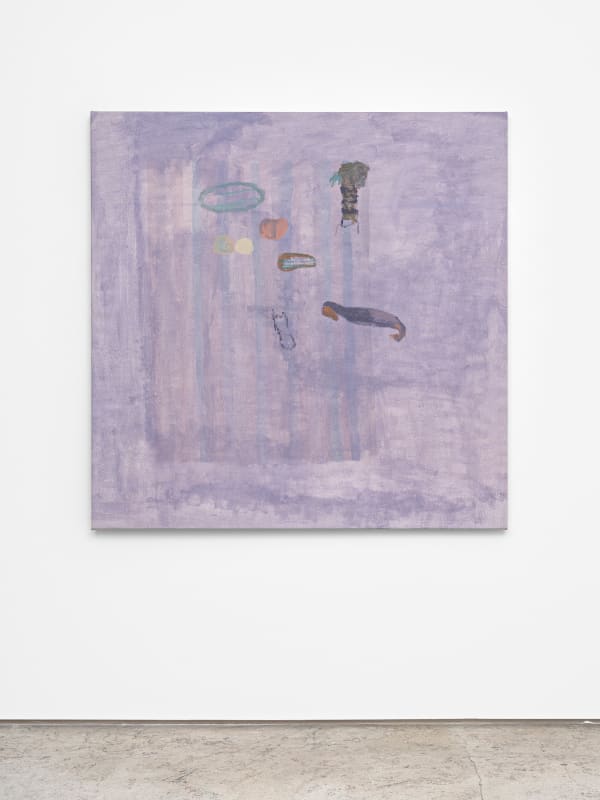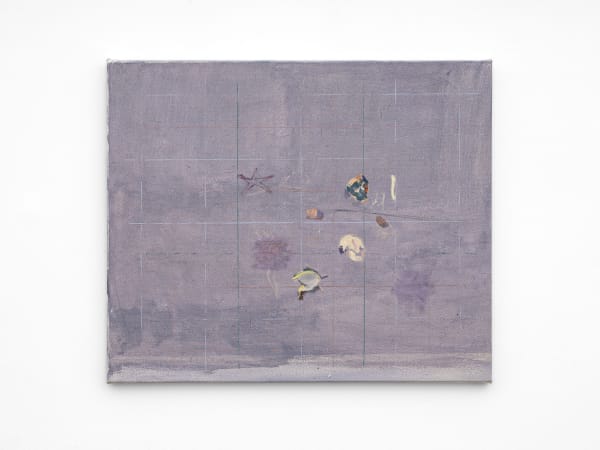SHIKH SABBIR ALAM: "Still Life"
SHIKH SABBIR ALAM
"STILL LIFE"
10.10.-08.11.2025 / PREVIEW: FRIDAY 10.10.2025 18:00-22:00
-----
STANDARD (OSLO) is proud to present a solo exhibition of new works by Shikh Sabbir Alam. Taking the title "Still Life", the exhibition brings together 12 paintings and 20 drawings, which all took shape in the artist's studio in Kushtia, Bangladesh, during a truly troublesome year for his home country. For his second solo exhibition at the gallery - and indeed the gallery's very last exhibition in its current spaces in Waldemar Thranes gate 86 - Alam is making the genre of the still life his starting point. Fundamental to this genre is the notion of something stable, observable and verifiable, but set against a tumultuous time, these paintings are far more concerned with what is moving, enlivening and not allowing itself to be measured.
The name comes cross as cartoonishly comical: hit and miss brickwork. It has the sound of something more free of care than full of craft. Yet, somehow the name stuck for this technique of bricklaying. You will see it frequently employed in nations with a tropical climate, such as Bangladesh and the neighbouring India, making up walls of a vast range of buildings. It is done by putting a gap between two bricks on the same plane, where the mortar would usually join them together. Instead, you introduce a staggered sequence of every other slot being solid and every other being void. The result is a grid: an open structure that permits for the house to breathe. The building frame, offering shelter, also becomes a time frame, allowing to watch the shifting wind and weather, and to follow the daylight as it is moving through the house. It is an architecture of porosity and potentiality - one to observe change.
It seems rather becoming for a nation like Bangladesh - a young nation that has throughout its 54 year long history been struggling to find a solid version of itself. It is a nation where the natural scarcity of stone, has traditionally meant building with materials such as bamboo, wood and clay - building materials that are living, moving, warping and sensitive to changing climate conditions. The twelve paintings that make up Shikh Sabbir Alam's exhibition "Still Life", are equally made up of not so solid building blocks, while they at first glance appear otherwise. They are each anchored by a grid, which leaves one with the impression of looking into a vertical structure - something like a scaffold - or looking down onto a horizontal plane - like the millimetre paper of a technical drawing. The geometric sense of rigour is very much corresponding with the "Still" part of "Still Life". However, that still leaves us with the "Life" part. Alam allows for enough flux and forces to erode any sense of solid foundation. And it starts with a fundamental problem of the human senses when attempting to make a painting: what sort of discrepancy is there between what was, what is remembered, and what can be rendered?
On the one hand these paintings concern themselves with what can be seen. They are depicting bits and pieces of what surrounds the artist and can be observed by him in his hometown of Kushtia in the Bengal province; the fruits of the garden, the wild animals that come in from the forest, the distant views of the mountains. These motifs coexist as wilfully unassuming vignettes. They are each modest in scale, restrained in their rendering of details and direct in terms and mark-making - with bold brushstrokes and an immediacy of vision. On the other hand, these paintings concern themselves with exactly what cannot be conveyed by a painting; the dampness of the forest, the smell of the fruit that is rotting, or the sound of the heart beating faster after having been startled by a wild animal. They are matter-of-factly renditions of what can be not stated as facts by the painting. Or rather what can be seen is not what matters. These are paintings that are mapping out memory - that are tracing its steps backward from the form, through a thought, through a moment to find the smells, tastes and sounds that set all of this in motion.
"How to stop seeing that", the words reading across one of the drawings in Alam's exhibition. Possibly, these words offer an invitation to reimagine, to recalibrate senses, or, in the case of Bangladesh, to rid itself of the colonial hangover that has been fogging up its mind. The democratic building project remains a very unfinished one, even if the Jatiya Sangsad Bhaban - the National Parliament Building of Bangladesh - was completed in 1982. Designed by the American architect Louis Kahn, it was built in reinforced concrete to further strengthen the symbol of solidity. Maybe a more honest rendering of reality is that of Alam's painting, "Mummifed": neither dead nor undead. Just preserved. The Greek columns appearing alongside the mummies of Alam's paintings, are reconnecting with a distant version of democracy and providing a slight hope for life returning. Possibly the storming of Kahn's parliament building with the July Mass Uprising in 2024 - which supposedly has left it in need of a 20 million dollar renovation - is what is needed for this building to finally become an architecture observing change. Reflecting on his own practice, one that had him suffering more defeats than triumphs as an architect, he offered the words: "That which has not been built is not really lost. Once its value is established, its demand for presence is undeniable. It is merely waiting for the right circumstances."
-----
STANDARD (OSLO) / Waldemar Thranes gate 86C / +47 22 60 13 10 / info@standardoslo.no / N-0175 Oslo / +47 22 60 13 11 /www.standardoslo.no
Shikh Sabbir Alam (b. 1982), lives and works in Kushtia, Bangladesh. He received his MFA from the Oslo Academy of Fine Arts, and his BFA from the Faculty of Fine Arts, M.S. University of Baroda, India. Recent exhibitions include two solo exhibitions, both titled "Bon-Manush", in the two branches of the gallery Experimenter in Kolkata and Mumbai, India (2025); "Trembling Life" at XYZ Collective, Tokyo, under the auspices of STANDARD (OSLO) and as part of the "Onsen Confidential" (2024); as well as "In Our Veins Flow Ink and Fire", curated by Shubigi Rao, Kochi-Muziris Biennale, India (2022-23). Alam is also included in the current exhibition "Astrup Fearnley Collection", curated by Owen Martin and Solveig Øvstebø, at the Astrup Fearnley Museum of Modern Art in Oslo.
For further information please visit our webpage: www.standardoslo.no or contact Eivind Furnesvik at eivind@standardoslo.no or +47 917 07 429 / +47 22 60 13 10. STANDARD (OSLO) is open Wednesday-Friday: 12.00- 17.00/ Saturday: 12.00-16.00. Sunday and Monday: Closed. Tuesday: Open by appointment.
-----
-----
Next exhibitions:
Shikh Sabbir Alam / Torsten Andersson I Tauba Auerbach / Isabella Ducrot / Suleman Aqeel Khilji / Per Krohg /Julia Rommel / Oscar Tuazon
Art Basel Paris / Grand Palais / Booth H0.C9
22.10.2025-26.10.2025
This is the final exhibition of STANDARD (OSLO) in Waldemar Thranes gate 86 B/C. On the 17th of November, the gallery will relocate to Eilert Sundts Gate 40 in the Uranienborg area of Oslo. The gallery will reopen in January / February 2026.
-----



















